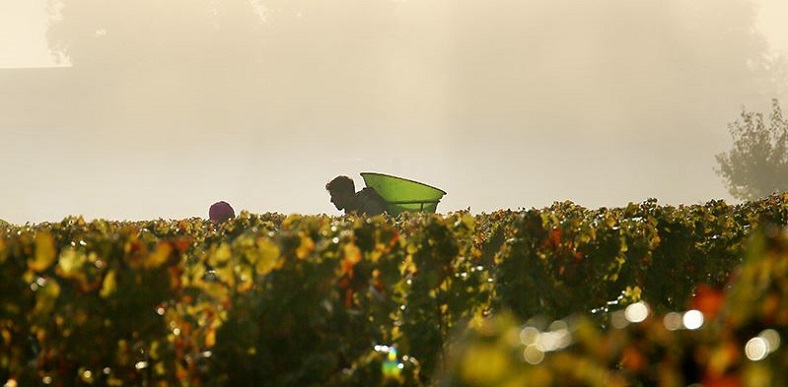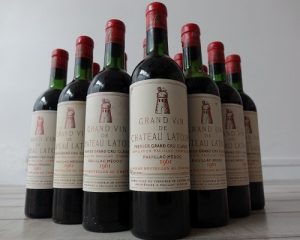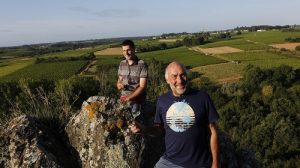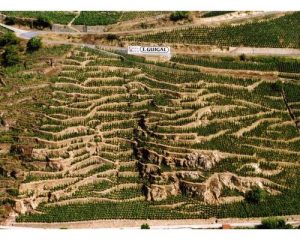
Dubourdieu. A familiar name in the world of wine because of Denis Dubourdieu, an oenologist, researcher, vintner, and founder of the Institute of vine and wine sciences. It is also the name of his sons Fabrice and Jean-Jacques who succeeded their father after his passing in 2016. It’s Jean-Jacques who has given us exclusive access to what lies at the heart of Château Doisy-Daëne, a grand cru of the 1855 Graves classification.
“I grew up at Château Reynon, a wine making estate that was the best kind of playroom for a boy who loved nature and big spaces. I always knew I would work at the family property.” Indeed, Jean-Jacques came back to join his father when he was 26 years old. Having taken a business-focused path, enriched by time spent in Spain and the US where he worked in purchasing and imports, this young man then returned to help his father out. His first mission was to assist his grandfather at Château Doisy-Daëne, before he took his retirement at the age of 83. This was a mission that built a certain rapport between the apprentice and the property, a château that had come into family hands in 1924.
Between his introduction into the family business and the acquisition of several properties (including Clos Floridène, and Châteaux Doisy-Dubroca, Reynon, Haura, and Cantegril), Jean-Jacques undertook ten years of training for this “vocation that requires experience”. He manages the domains that cover 136 hectares in all and a team of 40 people, producing 500,000 bottles per year. His brother is dedicated to the viticultural side of things, honing a culture of innovation which has been propelled by a firm desire to remain at the forefront of the business.
This is a ‘connected’ estate. A network of sensors produces precise measurements of all sorts, from electricity production to weather impact, thus optimising their work. And this work doesn’t ignore the importance of environmental concerns. Many of the vines are grown following methods certified level 3 HVE (Haute Valeur Environnementale) and Be Friendly, the latter being a recognition of pollinator protection. As well as this, two hundred hectares of forest protect local biodiversity and go some way to neutralising the carbon footprint.
With a viticultural savoir-faire rooted in the family since the 18th century, Château Doisy-Daëne figures among the elite producers of dessert wine. Classed as a second grand cru in 1855, it has its home in Barsac, an appellation characterised by clay-rich soil on a chalky bedrock; these confer beautiful acidity to the wines, bringing out their aromas. At the crossroads of the Garonne and the Cirons, the Sémillon grapes produce fresh and pure wines, less concentrated in residual sugar than those grown in Sauternes but with a much stronger acidity.
Bolstered by such assets, the nectars crafted at Chateau Doisy-Daëne can be enjoyed just as well when they’ve just been made as after 100 years of ageing. The magic of these wines is that young, they are coveted for notes of fresh fruit, citrus, and apricot, and after a while in the cellar, they are admired for their bouquet of candied fruit, truffle, and honey. These cuvées have noble rot to thank for the complexity of their aromas. More than a wine simply overflowing with residual sugar, this is a cru that is naturally opulent.
These meditation wines shouldn’t be reserved only to pair with desserts. Jean-Jacques envisions his cuvées served as an aperitif or with savoury dishes. “Around 80 years ago in the South-West, it was traditional to serve a Sauternes wine with poultry or a capon.” And it will also go nicely with re-dinner appetisers, going down easily with cheese, charcuterie, or oysters. There are many pairing possibilities, and you can explore several of them since this wine can be enjoyed for up to three weeks after it’s uncorked!
The mark of Doisy-Daëne has always been to stand out in its excellence. Convinced of the terroir’s potential to produce fine whites of all kinds, the estate has also vinified a dry white cuvée since 1948. This is a rare sight in Bordeaux and in the world of this appellation’s grands crus. The Sauvignon Blanc grapes draw their noble character from a cool, chalk soil that offers personality and taste. As for the Extravagant cuvée, this is also a pure Sauvignon Blanc, but these ones are botrytised and harvested grape by grape. Only three barrels – 2,000 bottles – are produced when the vintage is deemed good enough. A wink to the varietal that dominated in the prestigious 1855 classification.



